Decoding Frank Sinatra’s Phone Book Offers an Inside Look at the Life—and Loyalty—of Ol' Blue Eyes
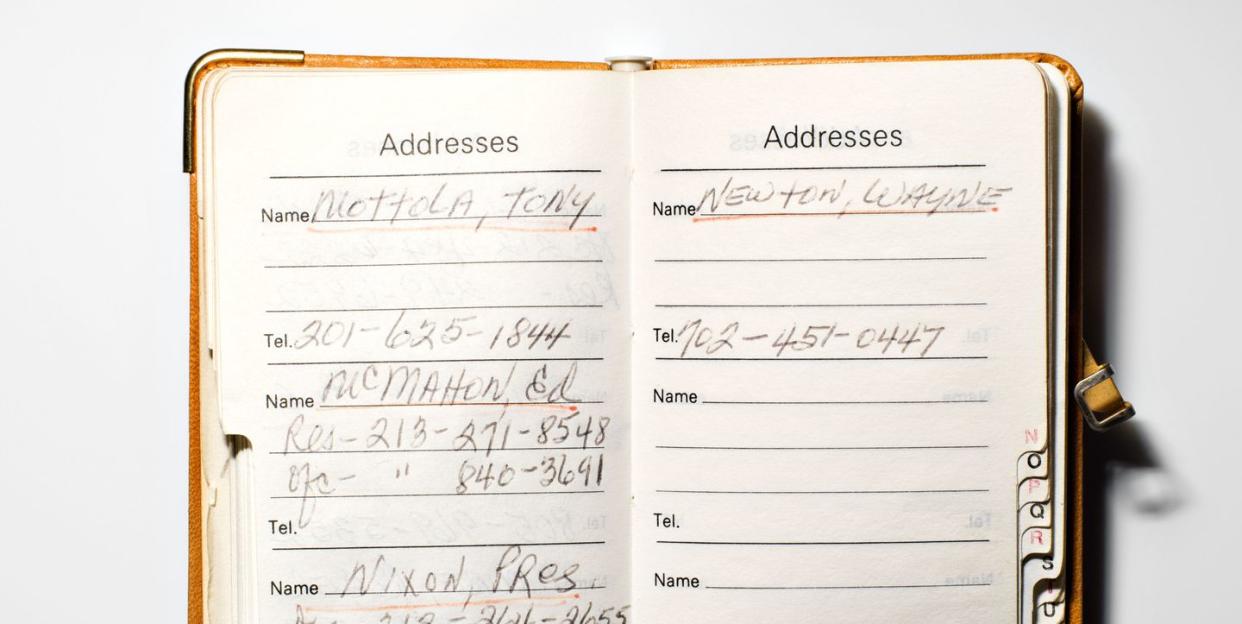
Inside Frank Sinatra’s palm-size, camel-brown leather phone book, you will find 108 names. Dean Martin is there. Jerry Lewis is there. So are Wayne Newton, Don Rickles, and Roger Moore, not to mention one secretary of state (Kissinger), two presidents (Ford, Nixon), three dentists, an Agnew, and a Rockefeller, as well as guys named “Nifty,” “Skinny,” “Smokey,” and “Whitey.”
Such are the bold-faced pleasures of photographer Henry Leutwyler’s beguiling new book, Hi there!, which reproduces every page in Sinatra’s personal phone book with the kind of single-minded focus generally reserved for crime scenes. Over the past 15 years, Leutwyler has developed a bit of a preoccupation with tracking down and photographing objects that once belonged to cultural icons (John Lennon’s specs, Gandhi’s sandal, Elvis’s remote control) but this is his most far-reaching and subtle exploration: 69 pictures of a single object.
Why go full-on obsessive? Because, says Leutwyler, an A-list celebrity portraitist who’s shot everyone from Beyoncé to Scorsese, “Objects talk. They tell stories, but they do not lie. There’s no hair and makeup. No stylist. It is what it is, and nobody’s chewing it for you.” Here, a few unretouched insights that Leutwyler’s book lays bare:
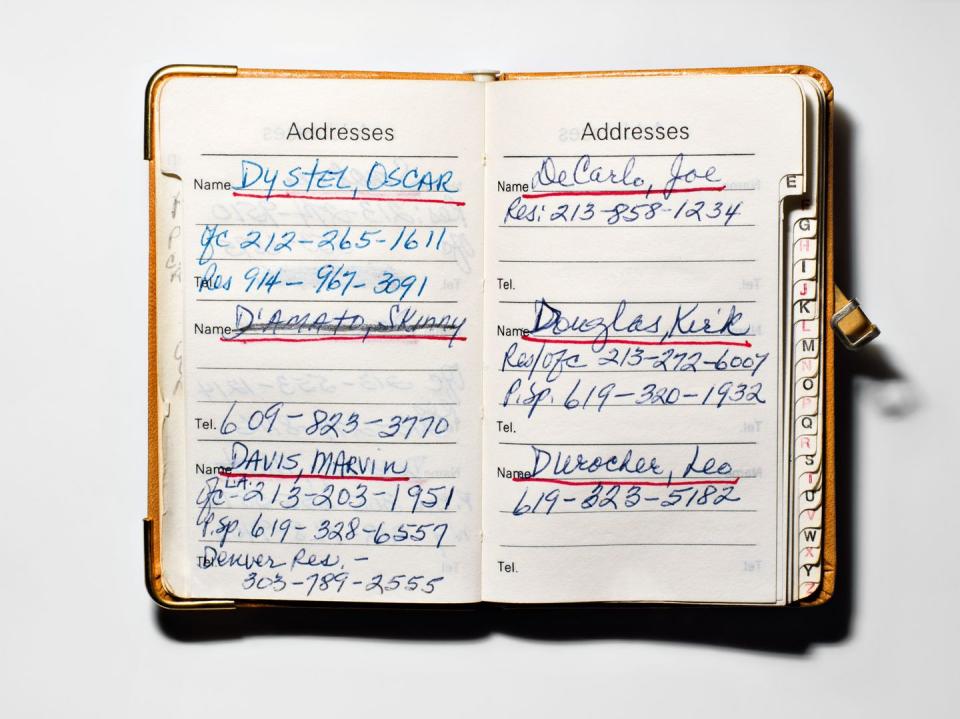
Sinatra was quite possibly the most connected man in America
"Address books reveal who you are,” says Leutwyler. “They reveal our lives. They reveal who we know. Where we go. Who we love. Who we hate.” Which is why Leutwyler was thrilled to discover Sinatra’s. (The zigzag trail that led Leutwyler to the singer’s phone book began after a night of excessive drinking in Zurich with ’60s “Bond girl” Ursula Andress—she fell asleep in his lap—followed James Dean’s wallet for a minute, and went cold for over a year before eventually leading Leutwyler to a reclusive European collector, who had acquired the phone book at auction.) Sinatra’s intricate web of relationships is a thing to behold: From the Prince of Monaco to Zeppo Marx, from Andy Warhol’s first muse to Dodger manager Tommy Lasorda, from the richest man in America to that guy who sat next to Johnny Carson for 30 years—they’re all here, laid out in ballpoint-blue ink. In his legendary 1966 story for Esquire “Frank Sinatra Has a Cold,” writer Gay Talese describes Sinatra as “the embodiment of the fully emancipated male, perhaps the only one in America, the man who can do anything he wants, anything, can do it because he has money, the energy, and no apparent guilt.” After studying the little book and each inscribed name, Leutwyler agrees: “I mean, what can he not do? Who does he not know? It’s all there. You need more money? You need a contract in Vegas? You need to be bailed out? You call the President of the United States.”
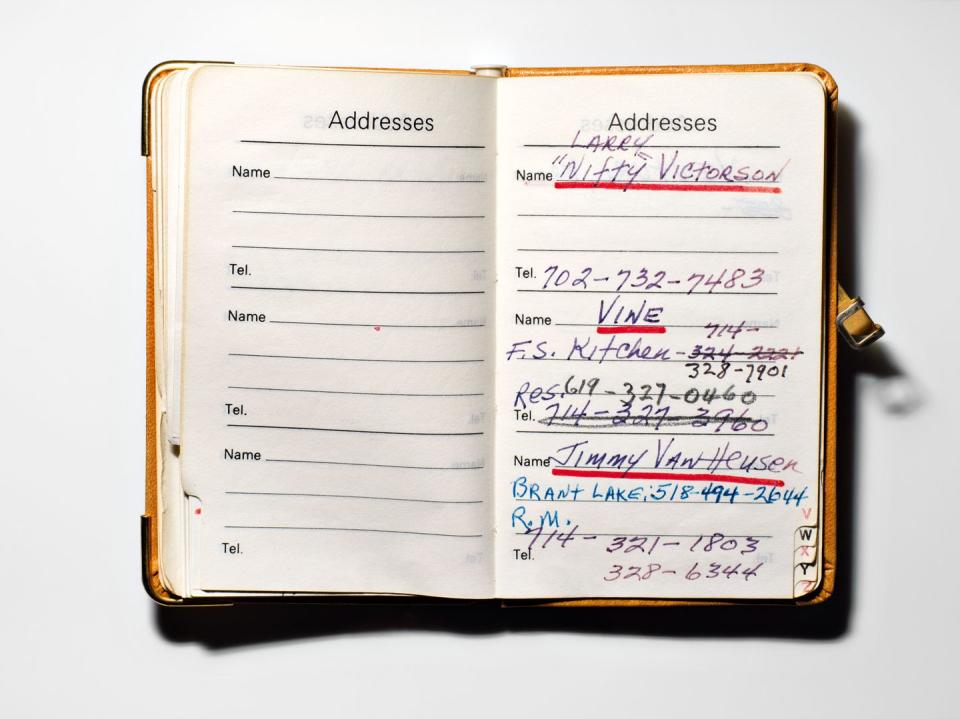
For a man about town, he was incredibly discreet
Sinatra owned more than one address book—his over-stuffed, three-ring desktop binder sold for $8,960 at a 2015 auction—and Leutwyler believes that this book, at 4.1 x 2.7 inches and small enough to fit in a suit pocket, was primarily for travel. But while plenty of famous names populate its pages, many you’d expect to see simply aren’t there. Like Sinatra’s former wives and girlfriends—Ava Gardner, Mia Farrow, Nancy Sinatra, Judy Garland, Angie Dickinson, among others—with whom he remained on good terms. There’s also no apparent sign of the singer’s old and—shall we be blunt?—mobbed-up friends, gentlemen like Chicago boss Sam Giancana or Detroit’s Vito “Billy Jack” Giacalone. In fact, who Sinatra chose not to include in the book proves his uncommon discretion. If it was a travel book, and if he happened to lose it, “Sinatra wouldn’t want it to give away too much information,” Leutwyler muses. “He didn’t want to incriminate anyone. He didn’t want to incriminate himself.” Which perhaps explains why the name of one Helen Turpin failed to make an appearance. According to Talese, for three years, Turpin was charged with ferrying Sinatra’s hairpieces, for which she was paid $80 a day.
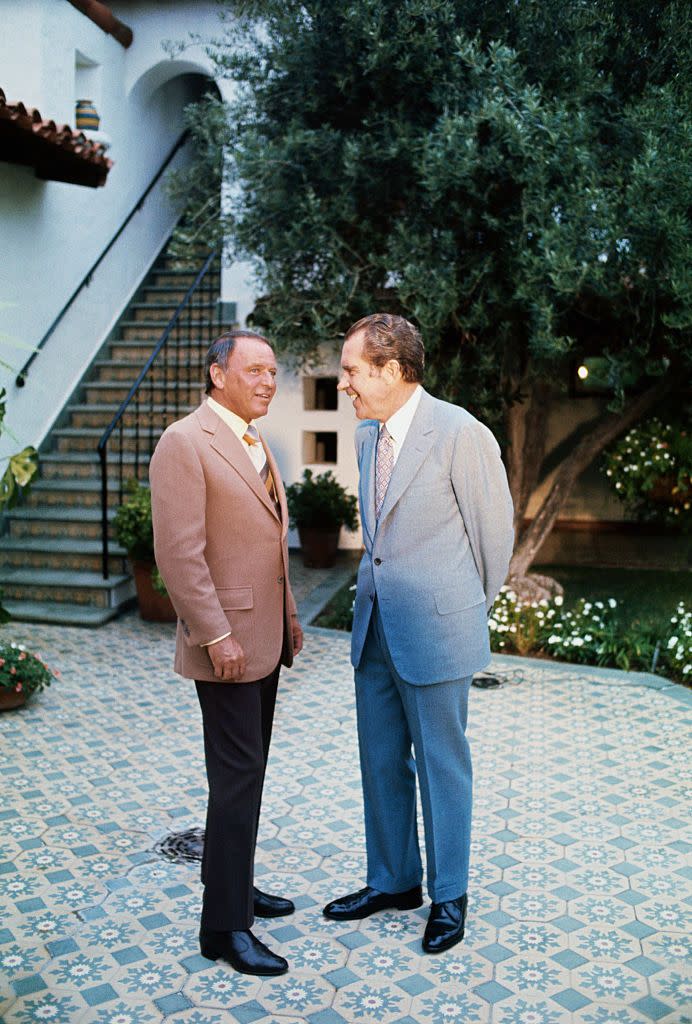
A few of these phone numbers still work
Really. Graham Howe, the curator and photo historian who wrote the introduction, researched all the names in the book, “mapping their connection to Sinatra by industry—entertainment, politics, health care, and so on.” Using Internet directory searches, he was able to confirm that the vast majority of the phone numbers are now “inactive or repurposed to other people.” But given that this Sinatra relic likely dates from, as Leutwyler puts it, “the cusp of the ’70s” and that nearly every contact has to be at least 80 years old, it’s surprising that even a few of the numbers still worked, including the office of one former internationally known powerbroker.
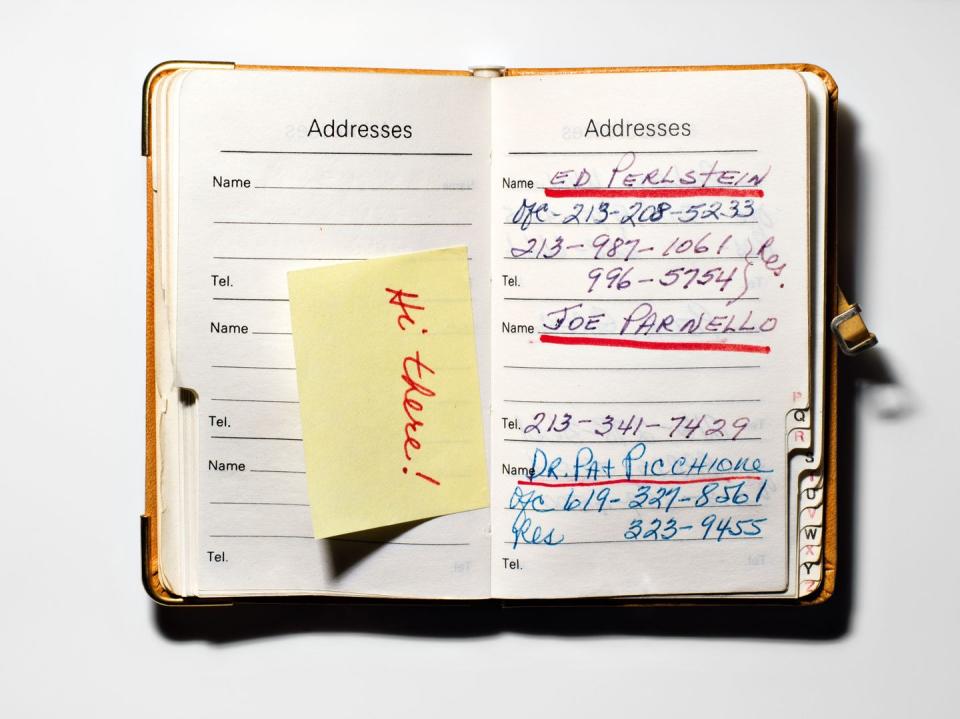
His devotion ran deep
Sinatra was famous for the loyalty he showed his friends, which is why drinks and dinner at Jilly’s Saloon, his Midtown haunt, often included 25 of his closest pals. There are markers of this in his phone book: Old friend Leo Durocher is there, as are Smokey (Sinatra’s nickname for Sammy Davis, Jr.) and Dr. Pat Picchione, a pallbearer at Sinatra’s mother’s funeral, as well as some of the musicians and songwriters he worked with for decades, and Jilly Rizzo himself. But as Talese reported in his story, there was a flip side to Sinatra’s fierce loyalty, which the singer’s mother explains rather concisely: “‘Yes, my son is like me,’ Dolly Sinatra says, proudly. ‘You cross him, he never forgets.’” Proof of Sinatra’s loyalty rests in the phone book: It contains but a single scratched-out name, that of Paul “Skinny” D’Amato.
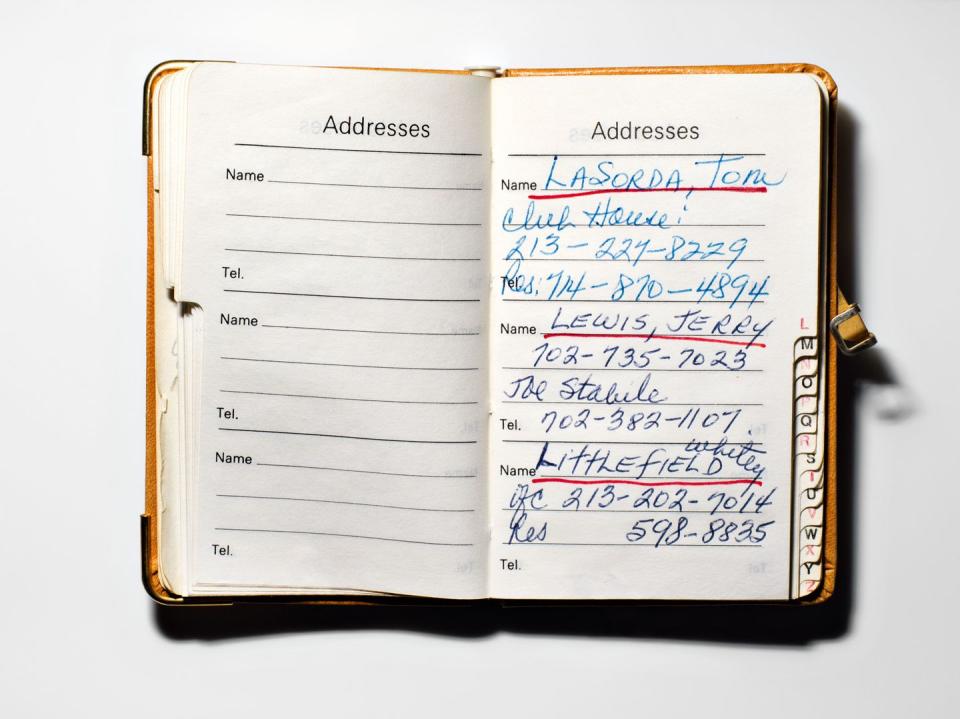
Sinatra had a soft spot for Post-Its
The book, which Howe believes is written in Sinatra’s hand, is free of scribbled annotation or commentary but for two yellow Post-Its, one in the “P” section that says, simply, “Hi there!” (hence, the book’s title), and the other stuck to the inside cover. That note reads: “Any number not in this book—I’m only a phone call away—I’m under ‘U’ Ha! Ha!” What to make of this? The one and only name in the “U” section is that of Dorothy Uhlemann, who served as Sinatra’s assistant for more than three decades and who would have had instant access to the singer’s hundreds of other blue-chip contacts. The “Hi there!” Post-It is more mysterious. Howe speculates that it was a pick-up note that went undelivered; both Post-Its, he writes in the introduction, carry “a sense of unrequited connection.”
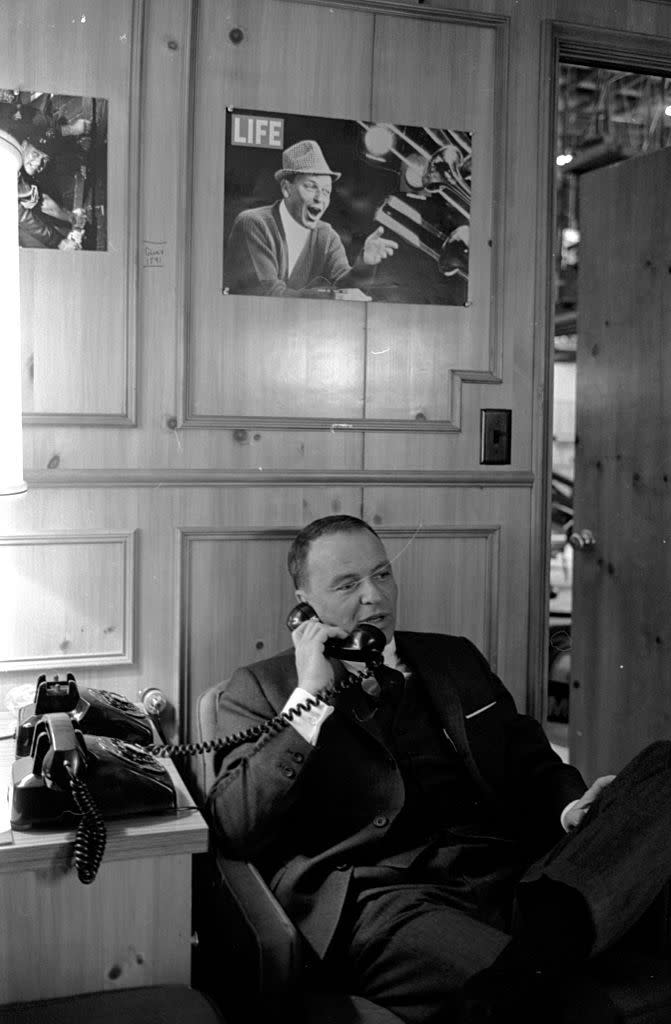
For Sinatra, appearances always mattered
The phone book, which presumably logged tens of thousands of miles in Sinatra’s pocket as he jet-setted from Beverly Hills to New York to Vegas to Palm Springs, is in perfect condition. No nicks or scratches, no brown liquor stains or cigarette burns. But while he was photographing the book, Leutwyler discovered something that even the collector who owned it had never noticed: A slender pencil with a white top that been inconspicuously inserted in the book’s spine. This sort of discovery is part of what appeals to Leutwyler about his photographer-slash-archeologist work. But the deeper attraction is the intimate connection an object like the phone book provides, a small bridge, made of leather and paper and ink, stretching back to Sinatra himself: “To have this thing which he held in his hand—for hours and hours and hours—a thing that he pressed a pen to, that he licked his finger and turned the page. There’s something,” Leutwyler says, “extremely magical about that.”
Bill Shapiro is the former editor-in-chief of LIFE magazine.
You Might Also Like

